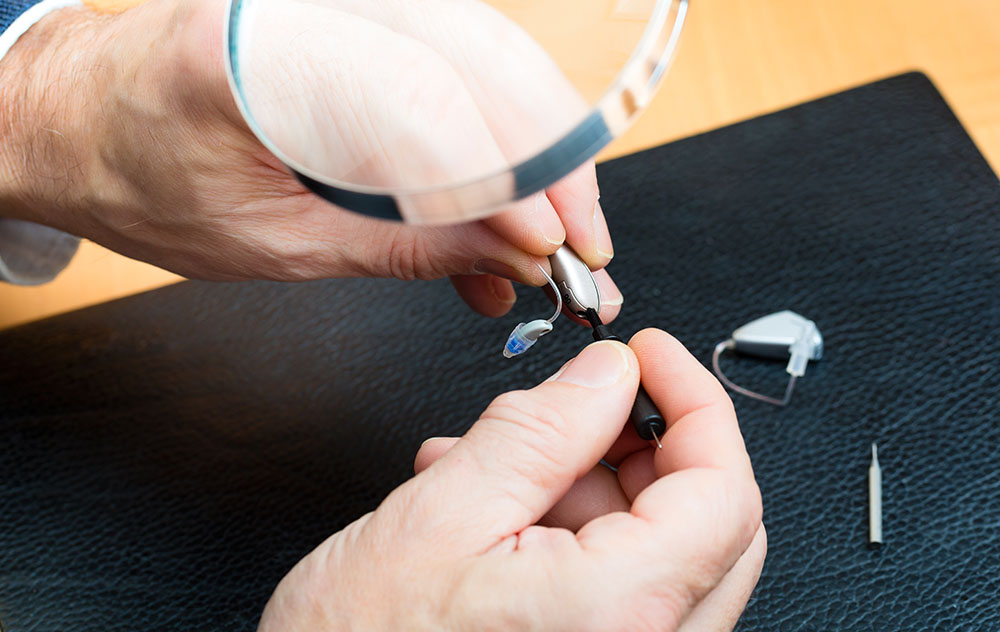- Home
- Hearing Loss
- Hearing Aid Use And Care
Hearing Aid Troubleshooting
2020-07-23

There are lots of things that can go wrong with your hearing aid, especially if you’ve been using it for a long time. It’s important to know what to do about these issues so you can troubleshoot them and get back to using your hearing aids as intended. No one wants to have problems with their hearing aids, especially as so many people rely on them each day of their lives.

We’re going to look at some of the most common problems associated with using hearing aids and we’ll then look at the various ways in which these problems can be put right and fixed. We’ll then look at what you should do if these fixes aren’t working. Sometimes, your hearing aids are telling you that a professional repair job is required.
Ways to troubleshoot your hearing aid
Hearing aids are incredibly advanced and delicate pieces of technology. Because of their small size, they can be prone to technical or physical issues. There are several different ways you can troubleshoot these issues at home, but it’s important to note that intricate or damage repairs should be handled by your audiologist.
- Sound feedback: Feedback is when your hearing aid produces sounds that it simply isn’t meant to. Sound feedback can be very frustrating and difficult to contend with and it can come in the form of a whistling sound most often. Positioning is the first thing to check because feedback is most common when the tip of the hearing aid is not securely positioned where it should be. You might also need to change the volume control to fix the problem.
- Failure to turn on: The first thing to try if your hearing aid won’t turn on is the battery. Change it and see if that fixes the problem; you’ll be surprised how often it’s a simple thing like that. If changing the battery does nothing, you should check the switch is set to on and clean it out to remove excess wax that might be causing problems for you. You should also check for any cracks or damage in the tubing and wires of the hearing aid.
- Weak sound: Sometimes, the sound coming out of the hearing aid can be weak and that’s obviously not right at all. It might be the case that your brain is simply getting used to the sound so you get the impression that it’s weaker when it’s actually not. If that’s the case, simply increasing the volume should work for you. Replacing the battery can also often fix problems relating to weak sound output. Again, looking at the tubing is advisable too.

Even with the best care and maintenance routine, hearing aids can experience issues as they age or due to physical damage. If you struggle with any of the hearing aid problems below, schedule a visit to have them assessed by your audiologist.
- It won’t work at all: If the hearing aid simply won’t work at all, it’s probably time to get it replaced. If you’ve tried everything and nothing is working and the device won’t even turn on no matter what you do, your only remaining option will be to send it for repair. But if the device is old, the repairs might not even be worth it and you might prefer to simply replace the hearing aid with a new one instead. That’s something that you’ll have to decide for yourself.
- Low volume problems: If the volume is too low and it won’t increase even when you turn it up, this is again a problem that needs to be repaired by a professional. If you’re sure that the battery is not the source of the problem, it must be something else inside the hearing aid that’s causing the issue. Unless you know how to repair hearing aids to a professional standard, that’s something that you shouldn’t try to fix by yourself because it won’t work out well.
- Variable sound quality: Variable sound quality can be frustrating and if you’ve tried the ideas above and nothing is changing it, you should let an expert look at it. They’ll be able to see where the problem lies and fix it. It’s probably a technical fault inside the device, so, again, you’ll need an expert to assess it.
Latest
- 4 Essential Communication Rules for Family Members of Hearing Aid Users
- Hearing Aid "Break-In Period": Say Goodbye to Discomfort, Hello to Clear Sound
- The ultimate guide on how to choose hearing aids for seniors
- In addition to performance, how do parents choose children's hearing aids?
- Hearing Care Professional: How Do You Maintain Your Hearing Aids Regularly?
Hearing Aid Use And Care













All 0 comments